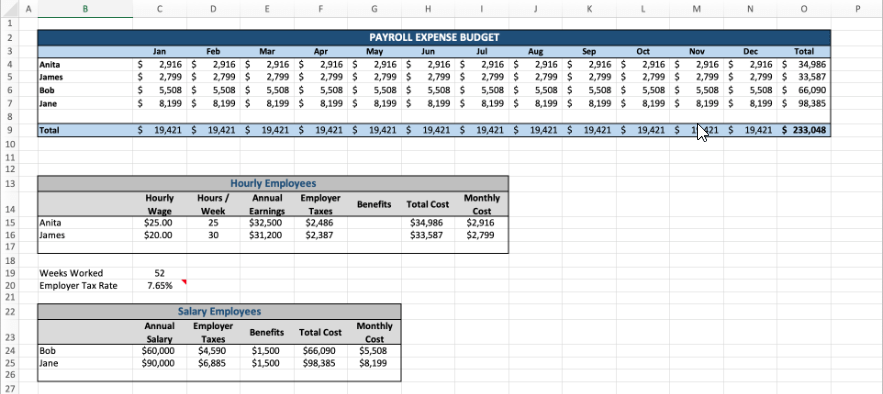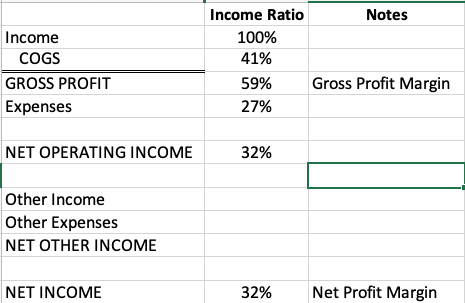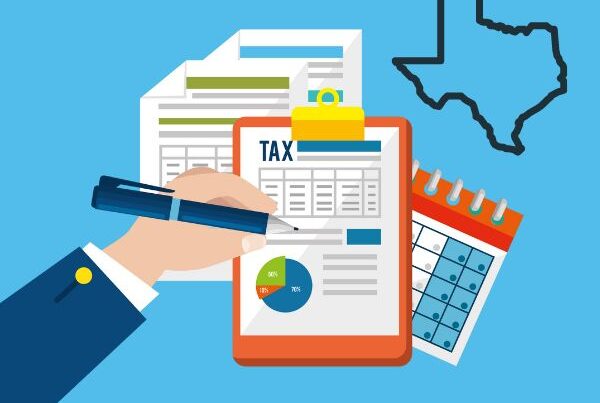Creating a budget for your small business can seem constraining and time-consuming, but it is super-important for building a strong, healthy business that can grow and sustain itself over time.
In a nutshell, budgeting is simply deciding where your money is going to go. Your financial statements then tell you where it went. Together, this is the core of good business accounting.
This blog will give several reasons why you need a budget and walk you through the steps of how to build one. You can also view our YouTube video that covers the topics in this blog more in-depth and takes you through the screenshots provided.
This blog is based on our eCommerce Budgeting Template, which you can download for free.
3 Reasons Why You Need a Budget for Your Small Business
Financial Control
In your personal life, you can sometimes get away with just looking at your bank balance to get an idea of how much money you have before you spend it. However, in business that’s a bad idea because you may have a lot of money coming and going through your business accounts and you can very easily spend too much without realizing it.
Nobody likes that sinking of the stomach when you realize that the money you thought you had has been frittered away because of a lack of financial control. This is one huge reason why a budget is so important.
Cash Flow Planning
Cash flow is the flow of money into and out of a business in a specific amount of time. If you know what your cash flow is, you can accurately plan for upcoming expenses, such as payroll and inventory.
Also, when you know what your income and expenses are, you can figure out if and when you need financing to make sure that you have enough cash to cover those expenses.
Click here to learn more about cash flow planning for small businesses.
Model & Ensure Profits
When you accurately plan how you’ll use the money coming into your business and control how it goes out, you get a pretty good idea of what your net profits will look like. This enables you to make financial decisions based on solid information rather than guesswork.
How to Build a Small Business Budget
There are plenty of tools for budgeting, but a great place to start is a spreadsheet. A spreadsheet has a lot of flexibility and is easy to change to match exactly what you need.
Time Frame
The first step in building a budget is to determine what time frame you want to use.
- Weekly
- Monthly (Best option)
- Quarterly
Budgeting weekly is sometimes good for cash flow planning and quarterly can be good for longer-term projections, but the best option is usually a monthly budget. This allows your budget to align with accounting reports, such as from QuickBooks, and is sufficient for most situations of cash flow planning.
Structure
The next thing to think about is what you want the structure to look like. A simple and effective method is to have your small business budget reflect your Profit & Loss Statement (also called an Income Statement).
This makes things neat & orderly because everything is planned and lined up before the money is spent in the same way it will be recorded after it’s spent.
It’s a good idea to break your categories down into separate worksheets on your spreadsheet so you can see more detail, and then roll that info up into a summary worksheet (like what you see above). This summary is what looks like the Profit & Loss statement, which simplifies the budget and makes it cleaner and easier to manage.
These worksheets could be called the Income Budget, the Cost of Goods Sold Budget, and the Expenses Budget.
The Income Budget
Start with your sales.
The Income Budget is where you record all the sources you’re bringing in money from. This is important because you may be selling on several different channels (if you’re eCommerce) or have several streams of income. It’s important to record the income from all your channels so you know how much money you have coming in and also, so you know which ones are most profitable.
When you know how much money is coming in and can see a pattern to it (use your past financials to help you see the patterns), you can then make income forecasts. Model your different income streams month by month to give you a starting place for your budget.
Note: we have an inventory forecasting template that can help you use your past sales data to forecast sales moving forward, so you can get an idea of when to order new product.
Now, remember no one knows what the future is going to bring, especially in sales, but if you look at your past financials and see that typically you sell a certain amount during a certain time frame, you can make an educated guess that it is likely to happen again.
The Cost of Goods Sold (COGS) Budget
The COGS Budget is where you see what your inventory is costing you. This is a key number for any kind of inventory-dependent business because it’s a key part of the ratio for determining your Gross Profit Margin, the most important number for an eCommerce business to calculate, record, and watch.
Because this is such a key ratio for your small business that accounting for it in your budget is crucial.
We see a LOT of eCommerce businesses making mistakes on their COGS, which leads to all kinds of inaccuracies in their financials. For more detail on COGS and calculating it accurately, click here.
Once you have your COGS numbers, you can then see the ratio of COGS to income. This is another key ratio for determining profitability of your business. This is what it looks like:
This ratio should be a fairly fixed percentage. If it’s not, you need to figure out why.
The Expenses Budget
COGS is not your only expense when you’re in business. Just like in your personal life, businesses have lots of different expenses, too. All of this must be accounted for in your budget to make it as accurate as possible.
It is a good idea to mirror your expense categories on your Profit & Loss Statement line item for line item because all these numbers will end up there anyway. Comparing apples to apples will make things so much easier in the long run.
Good budgets are not created out of thin air. They work best when they are based on solid information and your past financials are a good place to start.
If you haven’t been using a financial tracking system like QuickBooks, you can get this information from your bank statements. It’s not going to be completely accurate and it will be time-consuming to pull this information out, but it’s a good place to start and it will be worth it when you are able to bring solid numbers to your budget instead of random guesswork.
You may find that certain parts of your expenses, like payroll, require more detail than you can put on a spreadsheet like this, so this would be a good place to create another worksheet specifically for this expense. This way you can see all the relevant detail in one place and then roll the summary into your Expense Budget before taking all your expenses up to the main Budget Summary Worksheet.
Cash or Accrual
One thing to consider is how you want to track your business budget. Your choices are:
- Cash Basis – booking income & expenses when cash enters / exits accounts
- Accrual Basis – booking income & expenses in the time frame they occur
A good rule of thumb is, when in doubt start with using a cash-based system.
Use your budget!
The last step of creating a budget is to USE IT! All this work will be wasted if you don’t use it. Here are some tips to make that easier.
Ratios
Use your budget to pay attention to changes, specifically with your key ratios. These ratios will help you see if your business is running smoothly AND will help you spot places to increase your profits.
Like we said before, the key ratio to pay attention to is GPM.
Gross Profit Margin = Sales – COGS (as a percentage of income)
Other ratios to pay attention to are expenses in key categories as a percentage of income. These should hold steady month after month.
To learn more about maximizing GPM and other key ratios as an ecommerce business, click here.
Controlling Spending
If your expenses are not staying in line with your budget, control your spending by reviewing expenses before they occur. Some ways to do that are:
- Limits of credit card spending
- Pre-approving spending
- Purchase orders
There are several apps that can make this MUCH simpler and quicker than doing it manually.
Click here to read about the Expensify app.
Click here to read about several bill pay options.
Perfection isn’t necessary
One last thing to remember is that life happens and rarely goes according to plan. Don’t expect perfect alignment between your planned budget and how it ends up looking on your financial statements.
Because of this, we encourage you to plan on adjusting things periodically, at least every 6 months or as often as necessary.
As your sales go up, your expenses may need to go up, too. When your sales are down, your expenses need to go down, too, to maintain profits.
As you understand your financial model better, you can make changes in your budget to reflect that better, too.
If you need help, reach out and we’ll help you with your small business budgeting and accounting needs.














